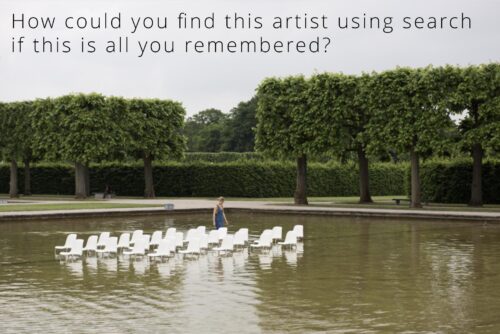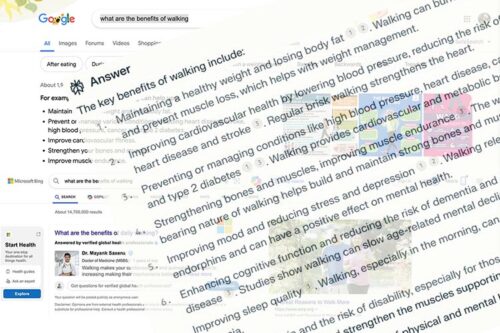November 30, 2023
In the vast landscape of the digital realm, where every click carries consequences, imagine if the internet were a nation—a powerhouse of pollution rivaling the top five countries on our planet.
It’s easy to point to the users of private jets as having large carbon footprints (especially when they’re attending climate conferences) but the internet is often overlooked in terms of its environmental impact and it’s worth knowing how much our habitual internet usage is adding to the problems we’re facing. Let’s take a brief look and see if we can’t find a few areas where we can mitigate the internet’s ecological footprint—including better web design.
If the Internet were a country it would be one of the top five polluters
Per the W3C (see: Web Sustainability Guidelines), the digital industry is now responsible for between 2-5% of global emissions—more than that of the aviation industry. Since the Paris Agreement was signed in 2015, average web page sizes have increased by over 70% on desktop and 140% on mobile. Between 2015 and 2021, internet visitors increased 60%, while internet traffic increased by 440%. In essence, if the Internet were a country it would be one of the top five polluters. It is the largest coal-fired consumer of energy on the planet, accounting for 10% of global electricity demand.
It’s true that the cryptocurrency frenzy is a major contributor to this. A September 2022 study in Scientific Reports found that from 2016 to 2021 every US dollar’s worth of mined bitcoin market value caused 35 cents worth of climate damage, for example—compared to 41 for gasoline.
It’s also true that gaming—from the creation and disposal of the devices used to the power used to play games—is a major contributor.
Streaming services like Netflix and YouTube? Through the roof—especially when the watching is done on a large screen.
Bulk emails? So much wastage. Unsubscribe to as many newsletters as you can to cut down on this.
Another contributor is mere data storage. All those photos taken and not deleted, all those videos, all those emails—servers are running 24/7 just to hold all that data so we can access it at any time. We get very lazy and keep a lot of digital material we will never ever look at again. It’s best to delete constantly; once things are long in the past a cleanup feels overwhelming.

But what’s of interest to me, as a web designer, is how much badly-designed websites can contribute to global emissions.
The bad players
Some websites are consciously made to get people to spend more time online than they need to; these are possibly the worst offenders and probably the least likely to be changed to be more sustainable. We’re looking at the websites that manipulatively get your attention in the first place and which then employ devious strategies (videos, pop-up ads, clickbait, etc) to keep you on the page and ultimately buy something. They’re not as interested in getting you to the information you want as they are in making profit.
The unaware players
Without meaning to manipulate people, there are still a lot of websites that fail to follow the good-design maxim of making it fast and easy for people to find what they want.
There’s an understanding that embedding a video on a webpage increases engagement with your website. It can do that but if the video isn’t helping people find what they want, it’s an energy hog.
There’s an understanding that images maketh the page. They often do—but images that haven’t been optimized for the web (small file size) take longer (and more energy) to download. And images that load regardless of whether the user is going to scroll through the whole page are using energy they don’t need to.
Sometimes a website is so full of pages and links people can’t figure out where the information they need is located. They click from page to page looking for it. Every unnecessary page they open is lost energy.
More unnecessary clicks come from people who are searching for something online and because a website has advertised or optimized to catch a wide range of people, it’ll attract people who actually aren’t a good fit for what the website offers. Again, a waste of a click and a page-load.
Sometimes a client has requested (or a designer has offered) graphics and animations that are more decorative than helpful and which add considerably to page-load.
Some developers rely heavily on plugins and other third-party platforms to achieve the functionality a website needs. The resulting drag on page-load time may or may not be very noticeable to the end-user but every additional resource loaded adds to the time/energy use the website creates.
There are hundreds more ways a website can be optimized (or not) for a more sustainable planet (check this list, for example, if you’re interested).
What you can do to be a good player
The main thing you can do (other than work with a designer/developer who is committed to creating fast-loading and easy-to-navigate websites) is to think in terms of your ideal audience: who exactly are they and what content is ideal for them? Simplify and give them what they need—keeping the expression of your brand and personality to a delightful but sustainable minimum. Design to be as lightly used as possible.
Oh, and read a good book when you take a break instead of spending your spare time looking at a screen…





